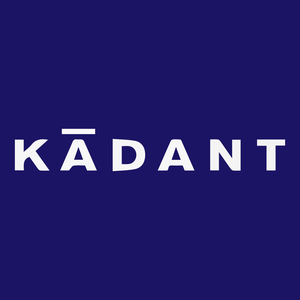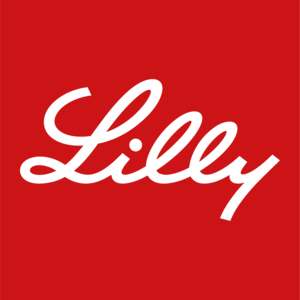
Zoetis (ZTS)
Zoetis is a sound business. It repeatedly invests in lucrative growth initiatives, generating robust cash flows and returns on capital.― StockStory Analyst Team
1. News
2. Summary
Why Zoetis Is Interesting
Originally spun off from Pfizer in 2013 as the world's largest pure-play animal health company, Zoetis (NYSE:ZTS) discovers, develops, and sells medicines, vaccines, diagnostic products, and services for pets and livestock animals worldwide.
- Excellent adjusted operating margin highlights the strength of its business model
- Stellar returns on capital showcase management’s ability to surface highly profitable business ventures
- On the flip side, its estimated sales growth of 4.2% for the next 12 months implies demand will slow from its two-year trend


Zoetis is close to becoming a high-quality business. If you like the stock, the price seems fair.
Why Is Now The Time To Buy Zoetis?
High Quality
Investable
Underperform
Why Is Now The Time To Buy Zoetis?
Zoetis is trading at $125.50 per share, or 18.8x forward P/E. Many healthcare companies feature higher valuation multiples than Zoetis. Regardless, we think Zoetis’s current price is appropriate given the quality you get.
If you think the market is not giving the company enough credit for its fundamentals, now could be a good time to invest.
3. Zoetis (ZTS) Research Report: Q3 CY2025 Update
Animal health company Zoetis (NYSE:ZTS) met Wall Streets revenue expectations in Q3 CY2025, but sales were flat year on year at $2.4 billion. On the other hand, the company’s full-year revenue guidance of $9.44 billion at the midpoint came in 0.8% below analysts’ estimates. Its non-GAAP profit of $1.70 per share was 4.8% above analysts’ consensus estimates.
Zoetis (ZTS) Q3 CY2025 Highlights:
- Revenue: $2.4 billion vs analyst estimates of $2.41 billion (flat year on year, in line)
- Adjusted EPS: $1.70 vs analyst estimates of $1.62 (4.8% beat)
- The company dropped its revenue guidance for the full year to $9.44 billion at the midpoint from $9.53 billion, a 0.9% decrease
- Management slightly raised its full-year Adjusted EPS guidance to $6.35 at the midpoint
- Operating Margin: 37%, down from 38.3% in the same quarter last year
- Constant Currency Revenue rose 4% year on year (14% in the same quarter last year)
- Market Capitalization: $63.97 billion
Company Overview
Originally spun off from Pfizer in 2013 as the world's largest pure-play animal health company, Zoetis (NYSE:ZTS) discovers, develops, and sells medicines, vaccines, diagnostic products, and services for pets and livestock animals worldwide.
Zoetis operates across two main segments: companion animals (dogs, cats, and horses) and livestock (cattle, swine, poultry, fish, and sheep). The company's product portfolio spans seven major categories including parasiticides, vaccines, dermatology treatments, anti-infectives, pain medications, diagnostics, and other pharmaceuticals.
The companion animal business, representing about 68% of revenue, focuses on products that extend and improve pets' quality of life while making treatment more convenient for owners and veterinarians. Flagship products include Apoquel and Cytopoint for treating itching and allergic skin conditions in dogs, Simparica for flea and tick control, and Librela and Solensia, innovative monoclonal antibody therapies for osteoarthritis pain in dogs and cats respectively.
For livestock, which accounts for approximately 31% of revenue, Zoetis develops solutions that help farmers and veterinarians predict, prevent, detect, and treat diseases efficiently, supporting sustainable production of safe animal protein. The Fostera vaccine line for swine and Protivity vaccine for cattle are examples of key livestock products.
Zoetis maintains a strong focus on innovation, both through developing first-in-class products and through product lifecycle management—expanding existing products into new species, formulations, or geographies. The company's research approach includes a "first to know and fast to market" philosophy for emerging infectious diseases, exemplified by its development of the first SARS-CoV-2 vaccine for zoo animals.
The company markets its products directly in about 45 countries and through distributors in over 100 countries worldwide. Its sales approach combines traditional veterinary sales representatives with technical specialists who provide scientific consulting on disease management. While most products are sold through veterinarians by prescription, Zoetis also reaches pet owners through retail channels and direct-to-consumer marketing in certain markets.
Beyond pharmaceuticals, Zoetis has expanded into veterinary diagnostics through its acquisition of Abaxis and its VetScan portfolio of diagnostic instruments, and has further enhanced these capabilities with AI-powered platforms like Vetscan Imagyst for rapid diagnostic testing.
4. Branded Pharmaceuticals
Looking ahead, the branded pharmaceutical industry is positioned for tailwinds from advancements in precision medicine, increasing adoption of AI to enhance drug development efficiency, and growing global demand for treatments addressing chronic and rare diseases. However, headwinds include heightened regulatory scrutiny, pricing pressures from governments and insurers, and the looming patent cliffs for key blockbuster drugs. Patent cliffs bring about competition from generics, forcing branded pharmaceutical companies back to the drawing board to find the next big thing.
Zoetis competes primarily with other major animal health companies including Boehringer Ingelheim Animal Health, Merck Animal Health (a division of Merck & Co.), Elanco Animal Health (NYSE:ELAN), and IDEXX Laboratories (NASDAQ:IDXX) in the diagnostics space.
5. Economies of Scale
Larger companies benefit from economies of scale, where fixed costs like infrastructure, technology, and administration are spread over a higher volume of goods or services, reducing the cost per unit. Scale can also lead to bargaining power with suppliers, greater brand recognition, and more investment firepower. A virtuous cycle can ensue if a scaled company plays its cards right.
With $9.40 billion in revenue over the past 12 months, Zoetis has decent scale. This is important as it gives the company more leverage in a heavily regulated, competitive environment that is complex and resource-intensive.
6. Revenue Growth
A company’s long-term performance is an indicator of its overall quality. Any business can put up a good quarter or two, but the best consistently grow over the long haul. Luckily, Zoetis’s sales grew at a decent 7.5% compounded annual growth rate over the last five years. Its growth was slightly above the average healthcare company and shows its offerings resonate with customers.
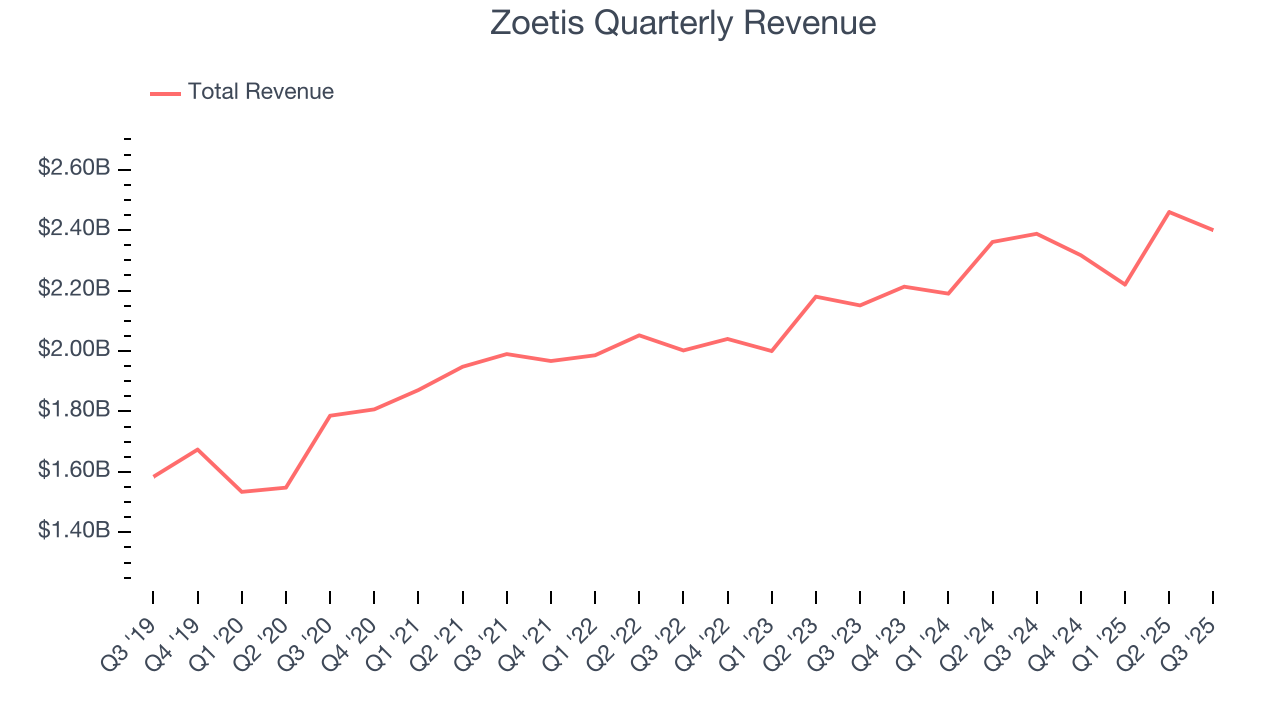
Long-term growth is the most important, but within healthcare, a half-decade historical view may miss new innovations or demand cycles. Zoetis’s recent performance shows its demand has slowed as its annualized revenue growth of 6% over the last two years was below its five-year trend. 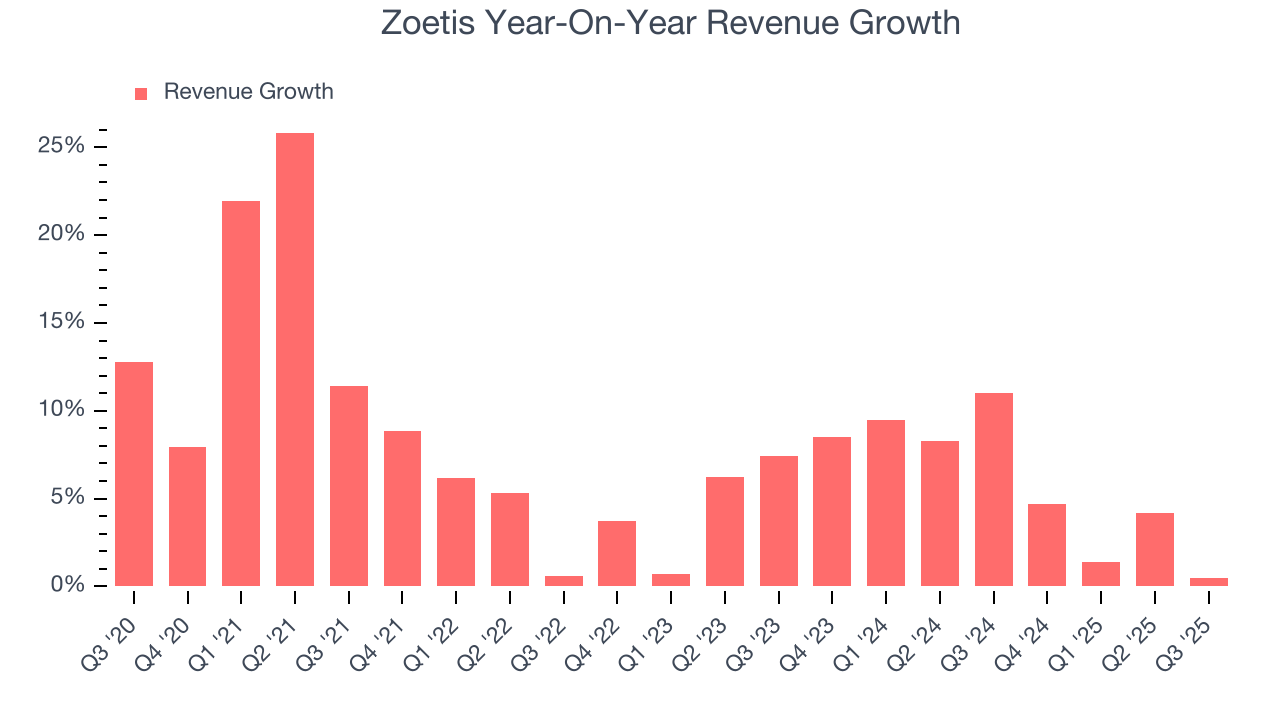
We can dig further into the company’s sales dynamics by analyzing its constant currency revenue, which excludes currency movements that are outside their control and not indicative of demand. Over the last two years, its constant currency sales averaged 8.1% year-on-year growth. Because this number is better than its normal revenue growth, we can see that foreign exchange rates have been a headwind for Zoetis. 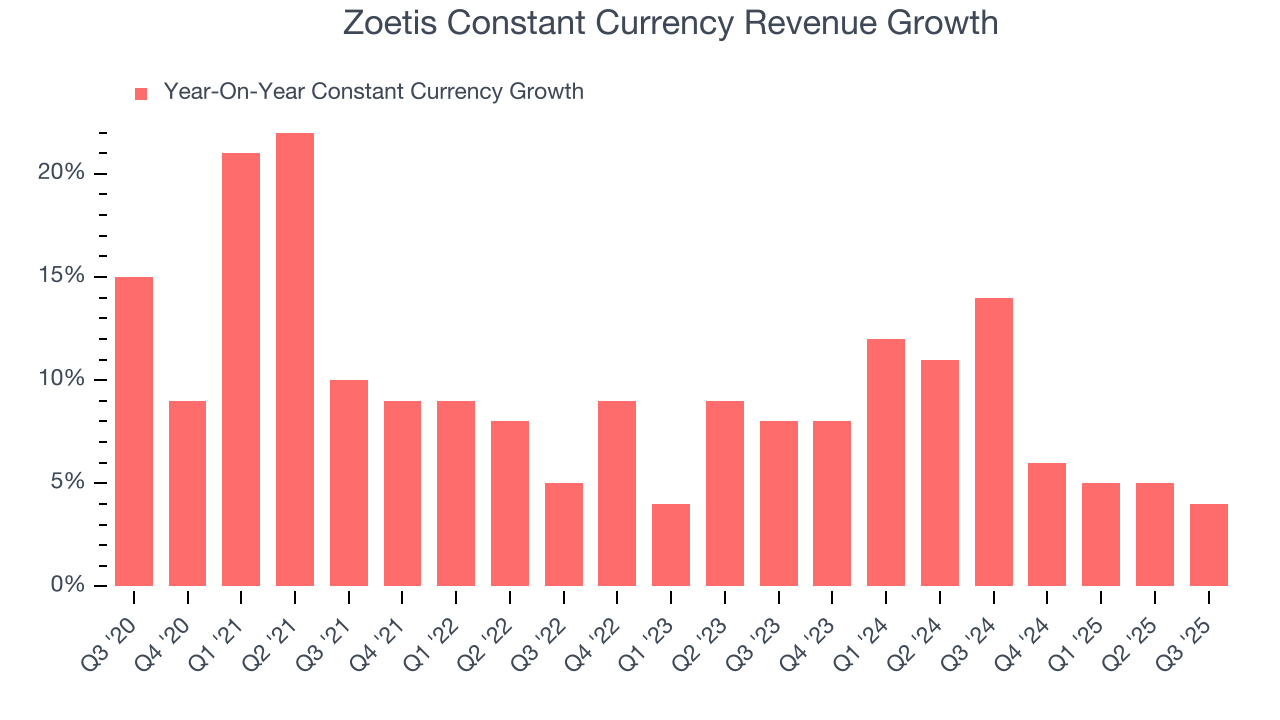
This quarter, Zoetis’s $2.4 billion of revenue was flat year on year and in line with Wall Street’s estimates.
Looking ahead, sell-side analysts expect revenue to grow 5.8% over the next 12 months, similar to its two-year rate. This projection is above average for the sector and suggests its newer products and services will help support its recent top-line performance.
7. Operating Margin
Zoetis has been a well-oiled machine over the last five years. It demonstrated elite profitability for a healthcare business, boasting an average operating margin of 35.8%.
Looking at the trend in its profitability, Zoetis’s operating margin rose by 1.6 percentage points over the last five years, as its sales growth gave it operating leverage.
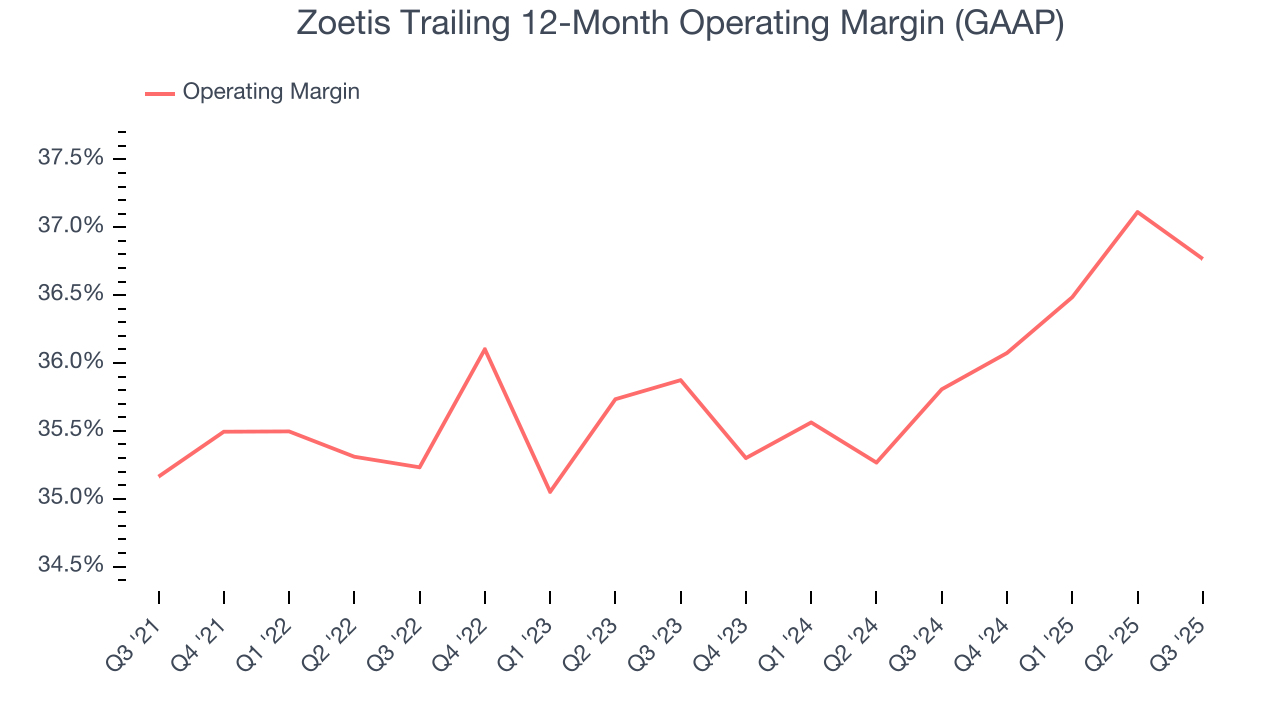
This quarter, Zoetis generated an operating margin profit margin of 37%, down 1.4 percentage points year on year. This reduction is quite minuscule and indicates the company’s overall cost structure has been relatively stable.
8. Earnings Per Share
Revenue trends explain a company’s historical growth, but the long-term change in earnings per share (EPS) points to the profitability of that growth – for example, a company could inflate its sales through excessive spending on advertising and promotions.
Zoetis’s EPS grew at a remarkable 10.5% compounded annual growth rate over the last five years, higher than its 7.5% annualized revenue growth. This tells us the company became more profitable on a per-share basis as it expanded.
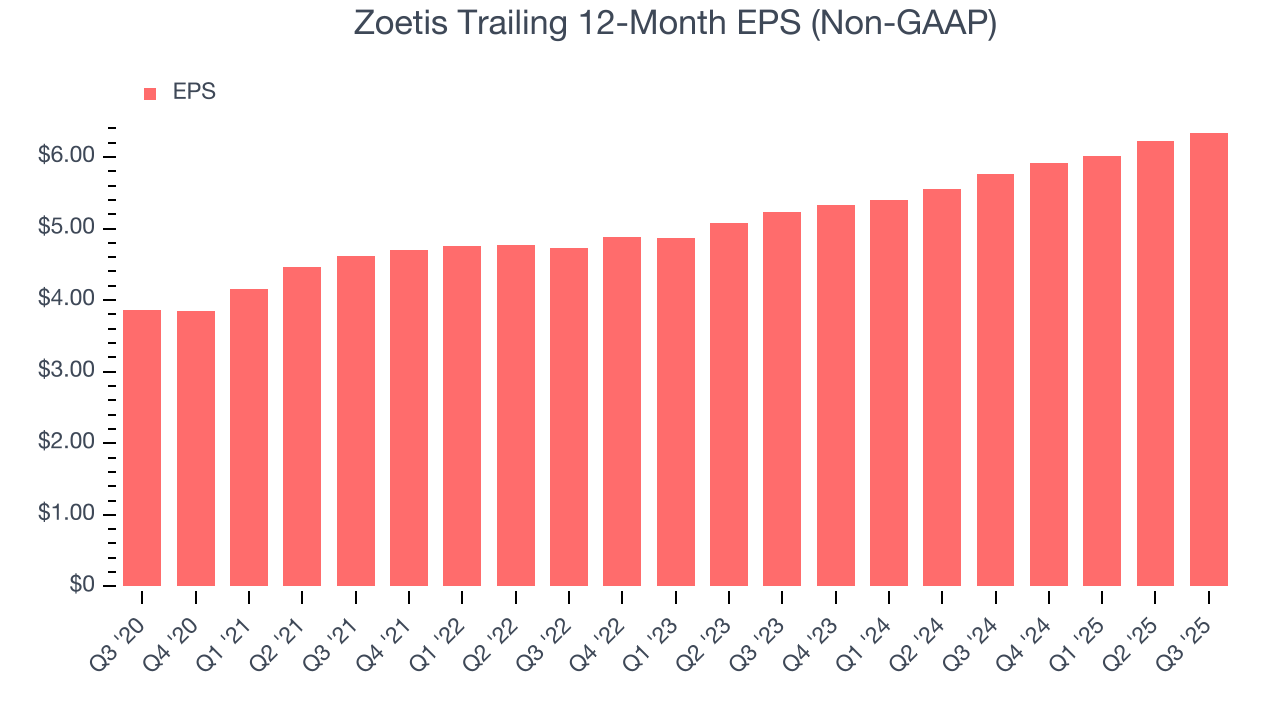
Diving into the nuances of Zoetis’s earnings can give us a better understanding of its performance. As we mentioned earlier, Zoetis’s operating margin declined this quarter but expanded by 1.6 percentage points over the last five years. Its share count also shrank by 7.4%, and these factors together are positive signs for shareholders because improving profitability and share buybacks turbocharge EPS growth relative to revenue growth. 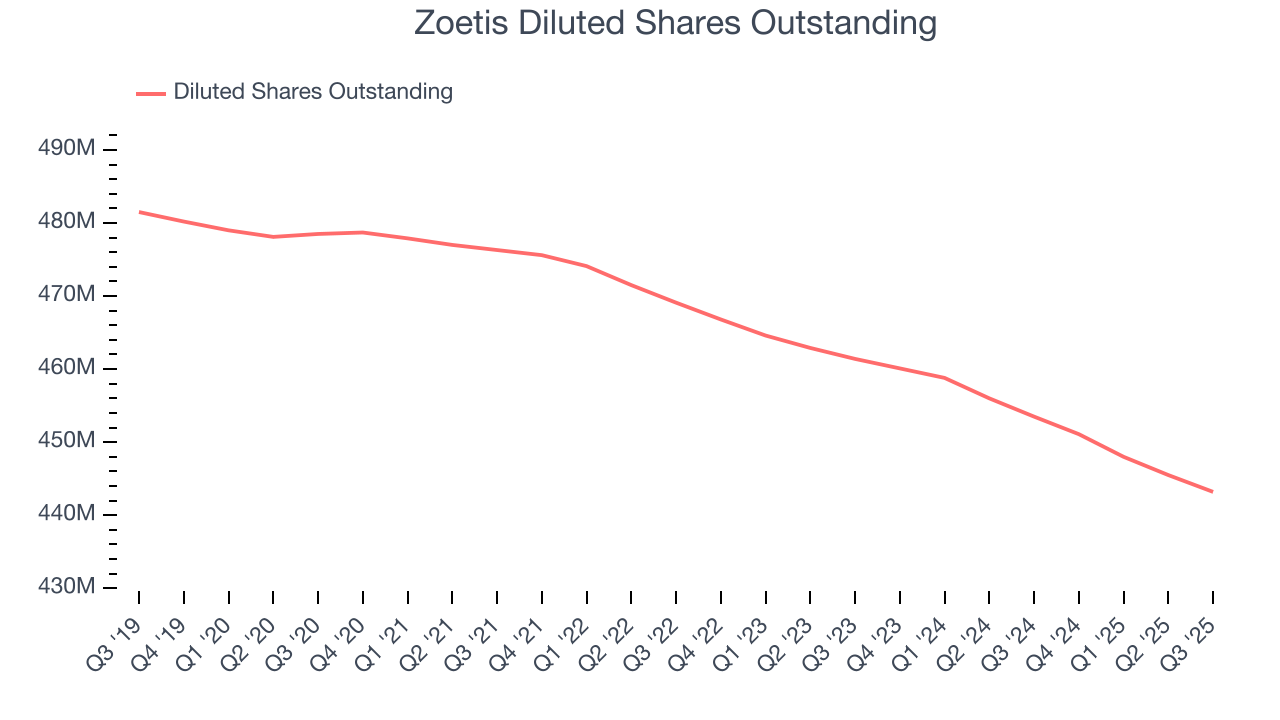
In Q3, Zoetis reported adjusted EPS of $1.70, up from $1.58 in the same quarter last year. This print beat analysts’ estimates by 4.8%. Over the next 12 months, Wall Street expects Zoetis’s full-year EPS of $6.34 to grow 5.7%.
9. Cash Is King
Free cash flow isn't a prominently featured metric in company financials and earnings releases, but we think it's telling because it accounts for all operating and capital expenses, making it tough to manipulate. Cash is king.
Zoetis has shown robust cash profitability, giving it an edge over its competitors and the ability to reinvest or return capital to investors. The company’s free cash flow margin averaged 20.7% over the last five years, quite impressive for a healthcare business.
Taking a step back, we can see that Zoetis’s margin dropped by 1.8 percentage points during that time. We’re willing to live with its performance for now but hope its cash conversion can rise soon. If its declines continue, it could signal increasing investment needs and capital intensity.
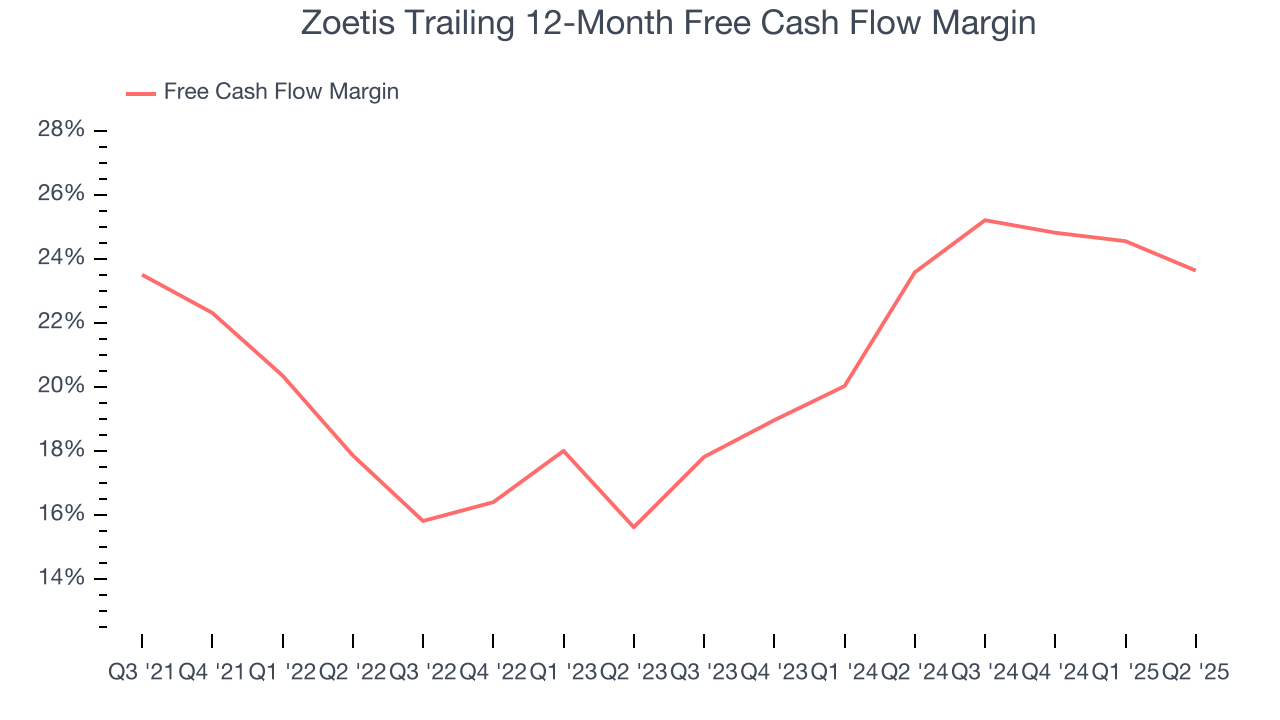
10. Return on Invested Capital (ROIC)
EPS and free cash flow tell us whether a company was profitable while growing its revenue. But was it capital-efficient? Enter ROIC, a metric showing how much operating profit a company generates relative to the money it has raised (debt and equity).
Zoetis’s five-year average ROIC was 28.7%, placing it among the best healthcare companies. This illustrates its management team’s ability to invest in highly profitable ventures and produce tangible results for shareholders.
We like to invest in businesses with high returns, but the trend in a company’s ROIC is what often surprises the market and moves the stock price. On average, Zoetis’s ROIC decreased by 4.2 percentage points annually over the last few years. Only time will tell if its new bets can bear fruit and potentially reverse the trend.
11. Balance Sheet Assessment
Zoetis reported $2.08 billion of cash and $8.62 billion of debt on its balance sheet in the most recent quarter. As investors in high-quality companies, we primarily focus on two things: 1) that a company’s debt level isn’t too high and 2) that its interest payments are not excessively burdening the business.

With $3.82 billion of EBITDA over the last 12 months, we view Zoetis’s 1.7× net-debt-to-EBITDA ratio as safe. We also see its $147 million of annual interest expenses as appropriate. The company’s profits give it plenty of breathing room, allowing it to continue investing in growth initiatives.
12. Key Takeaways from Zoetis’s Q3 Results
We liked how Zoetis beat analysts’ constant currency revenue expectations this quarter. We were also glad its EPS outperformed Wall Street’s estimates. On the other hand, its full-year revenue guidance missed Wall Street’s estimates after being lowered. Zooming out, we think this was a mixed quarter. Investors were likely hoping for more, and shares traded down 9.3% to $131 immediately after reporting.
13. Is Now The Time To Buy Zoetis?
Updated: December 24, 2025 at 11:36 PM EST
A common mistake we notice when investors are deciding whether to buy a stock or not is that they simply look at the latest earnings results. Business quality and valuation matter more, so we urge you to understand these dynamics as well.
There are things to like about Zoetis. To kick things off, its revenue growth was decent over the last five years. On top of that, Zoetis’s impressive operating margins show it has a highly efficient business model, and its stellar ROIC suggests it has been a well-run company historically.
Zoetis’s P/E ratio based on the next 12 months is 18.8x. When scanning the healthcare space, Zoetis trades at a fair valuation. For those confident in the business and its management team, this is a good time to invest.
Wall Street analysts have a consensus one-year price target of $158.22 on the company (compared to the current share price of $125.50), implying they see 26.1% upside in buying Zoetis in the short term.


